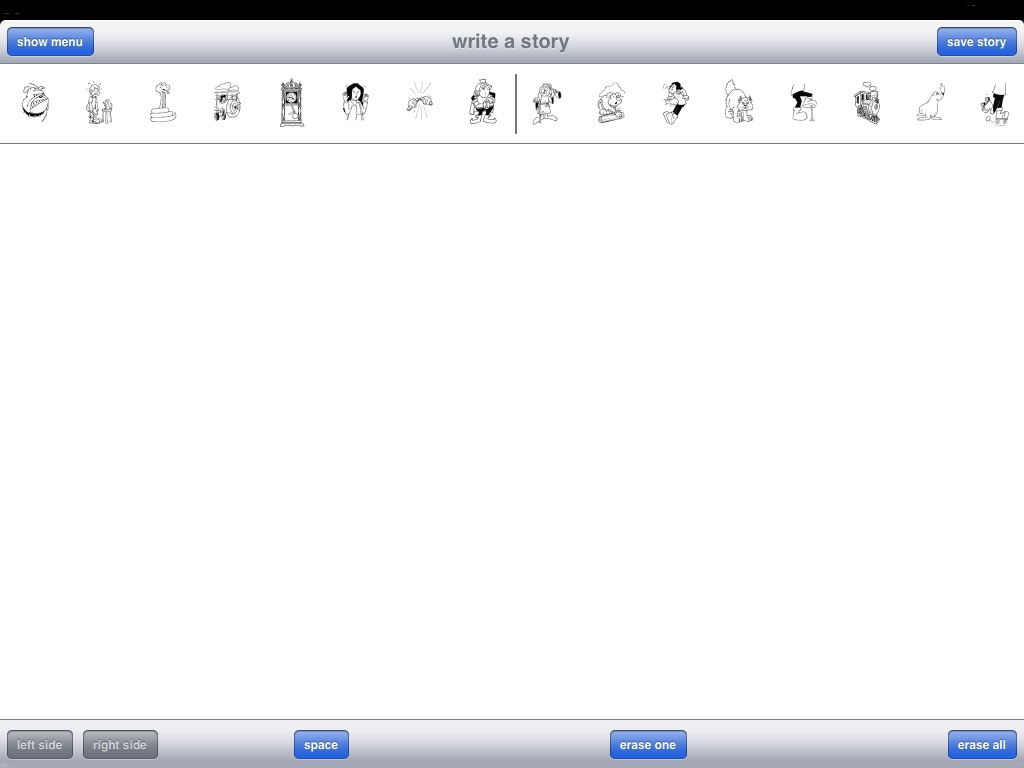
Stamping Words app for iPhone and iPad
Developer: Center for Innovation in Education
First release : 15 Feb 2012
App size: 1.93 Mb
Center for Innovation in Education
Stamping Words
Description
The sixth of the fourteen apps that comprise the Baratta-Lorton Reading Program.
The Reading Program is a reading and writing curriculum for beginning readers and any child who has already experienced difficulty in learning to read.
99% unique – 100% effective - 100% free
Background for the fourteen apps
The Baratta-Lorton Reading Program also known as Dekodiphukan (pronounced decode if you can) was developed by the Center for Innovation in Education whose many other offerings include Mathematics Their Way, the first non-traditional math curriculum adopted in by the State of California.
Dekodiphukan has been in use in classrooms across the United States and Canada since 1985. The Program has been used to teach thousands of children to read and to write regardless of background or supposed lack of reading readiness.
To date, no child using the program in a classroom setting has ever failed to learn to read or to write.
This Dekodiphukan reading and writing curriculum is now a series of fourteen apps plus a parent-guide for the iPad that, within a period of six months to a year (or occasionally a bit longer for some special needs children), will enable every child using it to read and to write. Reading with enjoyment. Writing creatively.
Dekodiphukan is a full fledged curriculum. It is a set of specific learning activities, not a set of games. The curriculum’s fourteen apps are all free with no ads - popup or otherwise - included. While the apps may be downloaded all at once and stored in a folder on the iPad, no more than two or three of the apps are used at any one time by the child.
Stamping
The sixth of the Fourteen Apps
Why is this app called Stamping? Because in the classroom version of the Baratta-Lorton Reading Program students use stamps to stamp out the sounds for the words they wish to write. The “stamps” may look different in app form, but their use is just the same.
The stamps for the 44 sounds offer children a unique opportunity to begin creative writing as soon as they have learned all 44 sounds. Writing with the stamps permits children see reading and writing as interchangeable
The logical progression of learning, presented in the Flipbooks, Booklets, Worksheets, and Picture Packets is, of course, important in insuring every child learns to read and read well. But the logical progression cannot capture for the child the excitement that comes from being able to put his or her own words on paper, or the feeling of power that writing affords when what one has written can actually be read by someone else - even if initially that someone else may only be parents and siblings.
Stamping allows the child to begin writing before he or she can read or write traditional letters, or even hold a pencil well.
The child is ready to begin stamping or “writing” any words he or she wishes as soon as he or she has learned all 44 sounds. “Ready to begin” does not mean ready to master. For a child to stamp out a word correctly, he or she must hear all the sounds within that word. This is not always easy, but it is always possible. All it takes is time, practice, and a parent with whom to share the experience.
The child’s first efforts may not be readable by anybody but the child doing the writing. The words may be missing sounds, or include extra sounds, or the wrong sounds, or have the sounds in the wrong order. None of this is important. What is important is that the child is free to write anything he or she wishes, how ever well or poorly the child may perform this writing at the start.
Stamping
An assessment tool for the sounds a child hears in words
Used by the child to write stories of his or her own creation
Stories are savable, editable, and printable
When ready, the child learns to writes these same stories in traditional letters using the decoding chart



